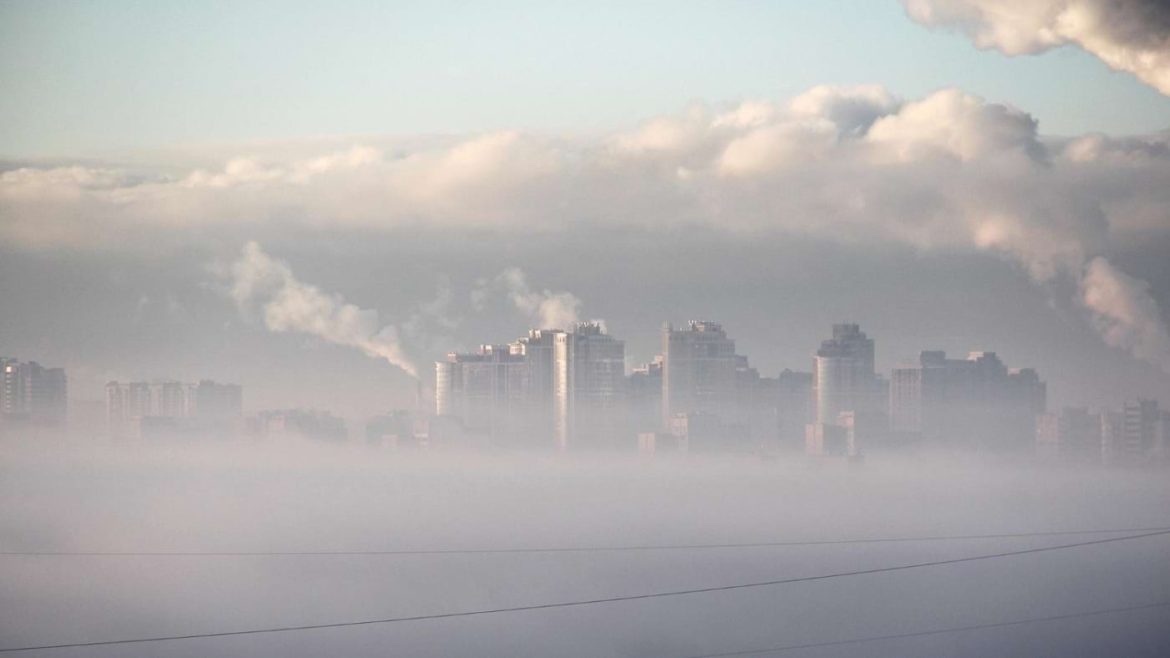An air quality map is a valuable tool that visually represents the concentration of various pollutants in the atmosphere over a specific area. These maps are designed to provide real-time data on air pollution levels, helping individuals, communities, and governments understand the quality of the air they breathe.
What is an air quality map?
An air quality map is a digital or printed representation that uses color-coded scales and symbols to indicate the levels of different air pollutants. These pollutants typically include particulate matter (PM2.5 and PM10), nitrogen dioxide (NO2), sulfur dioxide (SO2), carbon monoxide (CO), ozone (O3), and sometimes even volatile organic compounds (VOCs). The map usually displays a geographical region, showing variations in air quality across different locations.
Air quality maps are generated using data collected from a network of air quality monitoring stations equipped with sensors. These sensors measure the concentration of pollutants in the air and transmit this data to centralized systems. Advanced algorithms process this information, converting it into an understandable format that can be displayed on maps accessible to the public and authorities.
Understanding smog and its impact on human health
Smog is a type of air pollution that reduces visibility and can have severe health effects. It is typically a combination of various pollutants, including ground-level ozone, particulate matter, and other harmful substances. Smog is most common in urban areas with heavy traffic, industrial activities, and certain weather conditions that trap pollutants near the ground.
Types of smog
- Photochemical smog: This type of smog, also known as summer smog, forms when sunlight reacts with pollutants like nitrogen oxides and volatile organic compounds. The result is ground-level ozone, which is harmful to health.
- Industrial smog: Also known as winter smog, this type forms in industrial areas where burning coal releases sulfur dioxide and particulate matter. It is more common during the colder months when coal is used for heating.

Health risks of smog
Exposure to smog can lead to a range of health problems, including:
- Respiratory issues: Smog can cause or exacerbate conditions like asthma, bronchitis, and other respiratory illnesses. The fine particles in smog can penetrate deep into the lungs, causing inflammation and damage.
- Cardiovascular problems: Long-term exposure to smog is linked to an increased risk of heart attacks, strokes, and other cardiovascular diseases.
- Eye irritation: The pollutants in smog can irritate the eyes, causing redness, watering, and discomfort.
- Premature death: Studies have shown that prolonged exposure to high levels of air pollution can reduce life expectancy.
The role of air quality maps in governmental strategies
Governments and local authorities use air quality maps to develop and implement strategies to combat air pollution. By understanding the patterns and sources of pollution, policymakers can create effective action plans to improve air quality.
Strategy development
Air quality maps help identify pollution hotspots and trends over time. This information is crucial for developing targeted strategies, such as:
- Traffic management: Implementing measures like congestion charges, promoting public transportation, and developing cycling infrastructure to reduce vehicle emissions.
- Industrial regulation: Enforcing stricter emissions standards for factories and power plants, and encouraging the use of cleaner technologies.
- Public awareness campaigns: Educating the public about the sources of pollution and ways to reduce their exposure, such as staying indoors during high pollution days or using air purifiers.

Monitoring and enforcement
Air quality maps enable authorities to monitor the effectiveness of their policies and take corrective actions if needed. For instance, if a new policy does not lead to the expected improvement in air quality, authorities can analyze the data and adjust their approach.
Emergency response
During extreme pollution events, such as smog episodes, air quality maps provide real-time data that authorities can use to issue health advisories and implement temporary measures, such as restricting traffic or halting industrial activities, to protect public health.
Currently air quality map it’s indispensable tool in the fight against air pollution. It provide critical data that help individuals, communities, and governments make informed decisions to protect public health and the environment. As technology advances, the accuracy and accessibility of these maps continue to improve, offering hope for a future with cleaner air and healthier populations.




